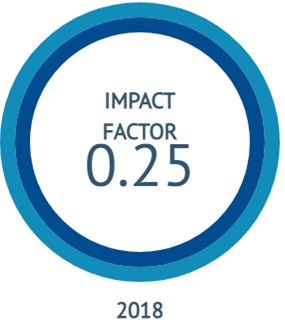Antioxidant Activity of Methanol and n-Hexane Fractions of the Barf of Kersen (Muntingia Calabura) Extracts
Abstract
Antioxidants are substances that can slow or prevent the oxidation process. Antioxidants can also be defined as compounds that protect cells from the harmful effects of reactive oxygen free radicals. Plants containing antioxidants are chemotactonomically characterized by chemical compounds derived from phenolics such as flavonoids, coumarin, xanthones, benzophenone, tannin, lignin, and anthraquinone. Muntingia calabura is one of the plants that is well known in Indonesian forests. Based on previous research, it was reported that a number of flavones and their derivatives that have bioactivity have been successfully isolated from this plant. One area that has this plant is Alor island- Nusa Tenggara Timur. This plant has several benefits, including as a trasditional medicine. The community uses this plant, where as a shade plant for shade and the fruit is consumed directly. However, until now the community has not used this plant as a medicinal plant and there has also been no research on Kersen (Muntingia calabura) from this area. The purpose of this study was to determine the antioxidant activity of the bark Muntingia calabura (Kersen) methanol and n-hexane fraction. The method used is the extraction and the DPPH method. The results obtained showed that the antioxidant activity of the bark of Muntingia calabura methanol fraction (IC50 124.58 ppm) was higher than the n-hexane fraction (IC50 244.95 ppm). From the IC50 values, of the both fractions showed that the methanol fraction was very active against antioxidants because it had an IC50 value close to the IC50 value of the positive control 112.872 ppm, while the hexane fraction was less active against antioxidants but still had the potential as an antioxidant.
Keywords: antioxidants, extraction, DPPH, Muntingia calabura (Kersen)
Downloads
References
Antimikroba Ekstrak Daun Kersen (Muntingia calabura),
Jurnal MIPA. http://journal.unnes.ac.id/sju/index.php/jm
Balan T, Mohd S, Ahmad S, SuppaiaH V, Mohtarrudin N, Jamaludin,
F, Zakaria ZA. 2014. Antioxidantand anti-inflammatory
activities contributetothe prophylactic effec to fsemi-purified
fractions obtained from the crude methanol extract of
Muntingia calabura leaves against gastric ulcerationinrats,
Journal of Ethnopharmacology. DOI.
10.1016/j.jep.2014.12.017
Bondet V, Brand-Williams W, dan Berset C. 1997. Kinetics and
Mechanisms of Antioxidant Activity using the DPPH Free
Radical Method, Academic Press Limited.
Brand-Williams W, Cuvelier ME, dan Berset C. 1995. Use of a free
radical method to evaluate antioxidant activit, LebensmittelWissenschaftund Technologie/Food Science and Technology,
28:25-30.
Ersam T, Achmad SA, Ghisalberti EL, Hakim EH, Tamin R. 1999.
Two Isoprenylated Flavones from the Root Bark of
Artocarpus altilis (Parkinson) Fosberg, Proc National
Seminar, 97 –103.
Hanani E, Mun’im A, Sekarni R. 2005. Identifikasi senyawa
antioksidan dalam spons callyspogia sp. Dari kepulauan
seribu. Majala ilmu kefarmasian.
Molyneux P. 2004. The Use Of The Stable Free Radical Diphenyl
Picrylhydrazyl (DPPH) For Estimating Antioxidant Activity,
J. Sci.
Prakash A. 2001. Antioxidant Activity, Medallion Laboratories :
Analytical Progres Vol 19 No : 2. 1 – 4.
Yusof M, Salleh M, Kek TL, Ahmat N, Azmin NFN, and Zakaria1
ZA. 2013. Activity-Guided Isolation of Bioactive Constituents
with Antinociceptive Activity from Muntingia calabura L.
Leaves Using the Formalin Test, Hindawi Publishing
Corporation Evidence-Based Complementary and Alternative
Medicine. DOI.
http://dx.doi.org/10.1155/2013/715074
Copyright (c) 2018 Universitas Nusa Cendana

This work is licensed under a Creative Commons Attribution-NonCommercial-ShareAlike 4.0 International License.

 Rosalina Y. Kurang(1*)
Rosalina Y. Kurang(1*)










